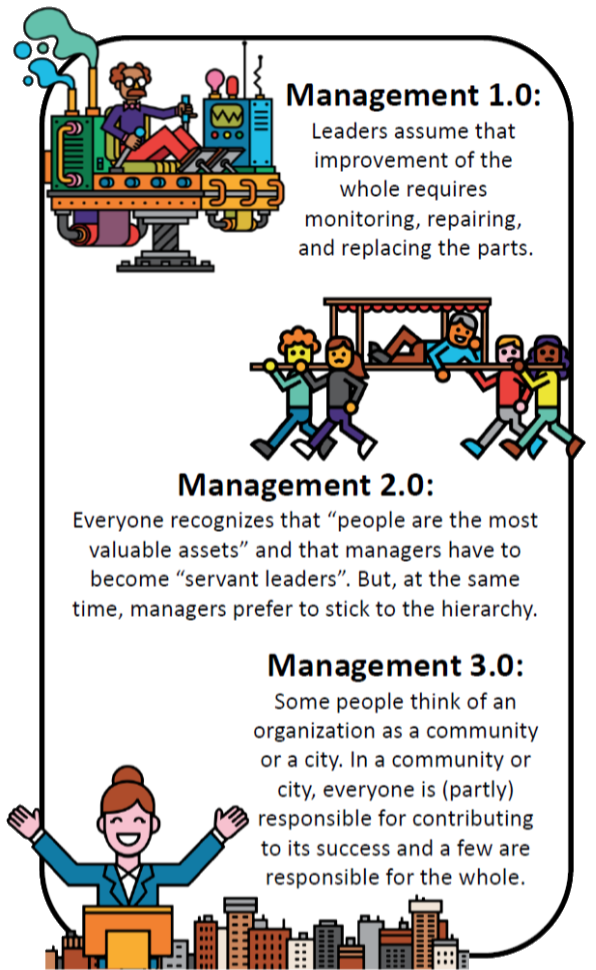Most organizational change questions have the same form: “How can we change other people?” But we acquire better, happier organizations by changing ourselves instead of others. When people don’t focus on improving themselves, is it any wonder they’re always complaining about each other?
Management 1.0: “Doing the wrong thing.”
For many organizations, a common practice is that they are managed like machines. We call this Management 1.0. In this style of management, leaders assume that improvement of the whole requires monitoring, repairing, and replacing the parts. It was engineers who developed scientific management, the command-and-control style of leadership that was quite successful in the 20th century. Engineers developed most management frameworks with upfront design, top-down planning and command-and-control structures and processes.
Management 2.0: “Doing the right thing wrong.”
Fortunately, many managers have realized that the greater challenge is working with people, not with machines. In a Management 2.0 organization, everyone recognizes that “people are the most valuable assets” and that managers have to become “servant leaders”. But, at the same time, managers prefer to stick to the hierarchy.

Management 3.0: “Doing it right.”
Some people think of an organization as a community or a city. You can do what you want, as long as you allow the community to benefit from your work. We call that Management 3.0. In a community or city, everyone is (partly) responsible for contributing to its success and a few are responsible for the whole.
We all know bad management (1.0), but there are also plenty of examples of good intentions with bad results (2.0). Usually, people don’t have many specific examples of 3.0 practices, which is why we offer Management 3.0 workshops around the globe!

